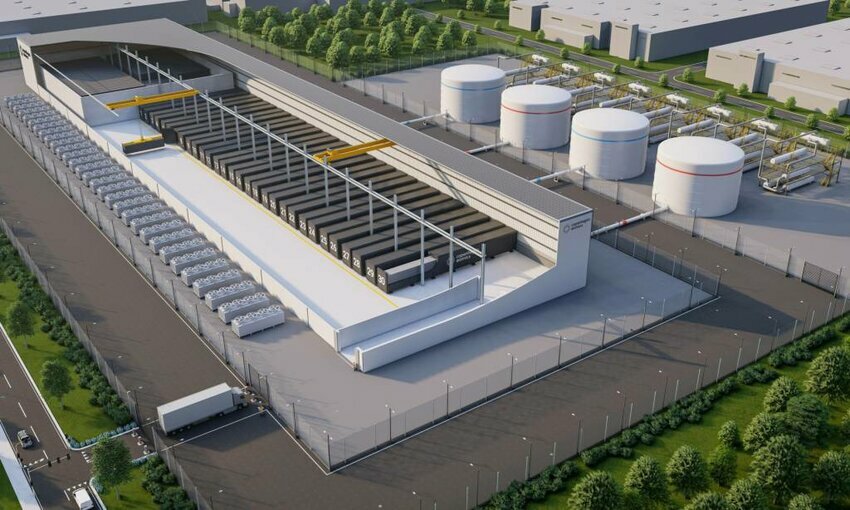 (Credit: Copenhagen Atomics)
(Credit: Copenhagen Atomics)Nuclear power developed in Denmark will help Indonesia produce low-emission ammonia that will go toward fertilizer and food production as part of an expansive partnership that highlights a growing focus on the clean energy source.
Danish companies Topsoe, Alfa Laval, Copenhagen Atomics, and Aalborg have agreed to generate the nuclear energy for ammonia produced by Pupuk Kaltim along with Pertamina New and Renewable Energy, which are both owned by Indonesia. The nuclear power plant will be capable of producing 1 gigawatt of energy and use 25 small modular reactors (SMR).
The facility will be powered by nuclear energy from Copenhagen Atomics, which has been involved in the international expansion to build and supply SMRs. The nuclear reactors are widely becoming seen as a key component for energy transitions, but concerns about safety, cost, and regulatory hurdles are making their implementation a slow process.
The operation is expected to reduce emissions by 1.7 million metric tons of carbon dioxide compared to traditional natural gas fertilizer production, the companies said. The facility will be located in Bontang and as part of the agreement will be operational for at least 50 years. It is expected to come online by 2028.
SMRs can produce up to 300 megawatts per unit and have a significantly smaller footprint than full-sized nuclear facilities, which enables them to fit into a smaller footprint. They can be prefabricated, according to the International Atomic Energy Agency (IAEA), and can be shipped and installed at a different site, making them more cost-effective. They also have simpler designs, the IAEA said, and can be safer relying on passive safety systems such as low power and operating pressure, meaning that no human interaction, external power, or force is needed to shut them down.
They require refueling every three to seven years, according to the IAEA, compared with one to two years for traditional power plants, with some being able to last up to 30 years without refueling. There were more than commercial 70 SMR projects in development as of 2021, the IAEA said.
In the United States, the Department of Energy recently distributed millions of dollars for nuclear projects that focus on microreactor design, hydrogen production, and regulatory issues. Westinghouse Electric Company also unveiled an SMR that it hopes to have the design and certification of the unit completed by 2027.
The Indonesian project is expected to cost around $4 billion, according to the Danish companies. It will be among the first to use Copenhagen Atomics’ modular molten salt thorium reactors.
Topsoe will supply a newly developed electrolysis cell technology to the facility, in addition to ammonia synthesis. The technology, called SOEC, will make the production of hydrogen more efficient and cost-effective, the company said.
Alfa Laval will supply heat exchangers to the plant to optimize energy and desalination to produce pure water for the electrolysis process. Aalborg is designing thermal energy storage systems, using molten salt-based steam boilers needed to integrate energy production from the SMRs with electricity and waste heat from turbines.
The companies said the ammonia from the plant also can potentially produce a carbon-free marine fuel, which could help with net-zero goals in the shipping industry, especially with Indonesia being on major trade routes. They said the low-emission ammonia produced could also help lower agriculture emissions from more sustainable fertilizers, and that plus the cleaner fuel production could lead to demand for similar facilities in other locations.